|
The Oregon Correctional Center, with an inmate population that is 150% of design capacity, has a 52-year-old kitchen and an inadequate health services unit, according to a Department of Corrections budget request. The Department of Corrections asked for about $3.6 million to address some of the structural and equipment issues at the minimum-security facility. Gov. Scott Walker and the Legislature said "no" and instead appointed a committee to study prison issues. This is part 7 in our series on Wisconsin prisons, how crowded they are, and what the Department of Corrections said is needed to improve, repair, and maintain them. Here is Part 1, Part 2, Part 3, Part 4, Part 5, and Part 6. As always, this primer does not really address the consequences of the crowding and physical shortcomings of the institutions – the impacts on inmates and staff. But we sure hope you will keep them in mind as you consider the price of mass incarceration. Institution: Racine Correctional Institution, Sturtevant Classification: Medium Security Capital budget request: None Institution: Racine Youthful Offender Correctional Facility, Racine Classification: Medium Security Capital budget request: None Institution: Oregon Correctional Center, Prairie du Chien Classification: Minimum Security Capital budget request: $3,588,000 Status: Rejected From the request: This project would provide for the construction of 2,063 GSF for a new building expansion of the kitchen and first floor inmate shower area, 715 GSF of remodeling of the health services unit (HSU) and inmate temporary lock-up cell (TLU), and improvements to the existing supply unloading area at the Oregon Correctional Center in Oregon, Wisconsin. ... Oregon Correctional Center (OCC) was constructed in 1973 to house 78 inmates and now houses 116. The current temporary lock up cell is a 38” x 40” steel cage currently located inside officer control. This allows offenders placed in TLU to easily observe and hear activity occurring in officer control. The main bathroom/shower facilities are located in the basement which lacks security staff supervision since the control center is located on the 1st floor. The health services unit is located behind officer control with little privacy and inadequate space. The kitchen is over 52 years old and in its original state. The bakery area operates in a shared, inadequately sized area with the pot and pan wash area. The walk in cooler and freezer do not provide sufficient storage capacity.
The existing Closed Circuit TV (CCTV) security system is at its maximum 16 camera capacity. With any type of renovation the security camera system would have to be updated to meet the additional cameras that are required to monitor inmate movement. The department could continue with the current layout of the facility, but this does not improve the HSU space, provide confidentiality in officer control, or provide proper environment for a temporary lock-up cell. The kitchen still lacks sufficient space for food preparation, food production, and sanitizing pots and pans. Also, the inmate shower area remains in the basement which does not have good security supervision since officer control is located on the first floor.
0 Comments
 Margo Kirchner & Gretchen Schuldt A judge must allow for expunctions of criminal records at sentencing or not at all, the State Supreme Court has ruled. Post-sentencing requests by a defendant to expunge are too late. By statute, a Wisconsin court may order “at the time of sentencing” that a sentence be expunged upon its successful completion if the maximum period of imprisonment for the offense is 6 years or less and the defendant was under 25 years old at the time the offense occurred. A bill that would allow for post-sentencing expunction requests is pending in the Assembly. The Senate version passed on a 30-2 vote, with State Senators Mark Miller (D-Monona) and Fred Risser (D-Madison) opposed. The bill would allow qualified offenders to apply for expunction after they successfully complete their sentences. “It is difficult for the court to know at sentencing whether the standards for expungement have been met, that is, whether the defendant will benefit and society will not be harmed,” Rock County Circuit Judge James Daley said in testimony prepared for a public hearing on the bill. “It makes far more sense to have this decision made later, after defendants have had an opportunity to demonstrate they have pulled their lives together and can be contributing members of society.” The State Public Defender’s Office and the Association of State Prosecutors also testified in favor of the bill. In the case before the Supreme Court, Diamond Arberry pled no contest to retail theft and attempted retail theft of merchandise. The Fond du Lac County Circuit Court judge sentenced her to one year of initial confinement and two years of extended supervision for one offense and two years of probation for the other. Arberry met the threshold requirements for expunction of those sentences, but during the sentencing hearing neither Arberry nor the judge raised the issue. Several months after sentencing, Arberry moved for an amended judgment finding her eligible for expunction after she completed the sentence. The trial court judge denied the motion, and the Wisconsin Court of Appeals affirmed. The Supreme Court, in its decision, concluded that a post-sentencing motion seeking expunction is procedurally barred by statute and precedent. The Court held that “at the time of sentencing” means only the time when sentence is imposed and does not include post-sentencing motions. Further, the Supreme Court rejected Arberry’s argument that the sentencing court must raise and consider expunction on its own if a defendant is eligible. Instead, said the Court, “it is the defendant’s burden to raise the issue of expunction.”  "Walker's judges" is our effort to present information about Gov. Walker's appointees to the bench. The information is taken from the appointees' own judgeship applications. Name: Daniel J. Borowski Appointed to: Sheboygan County Circuit Court Appointment date: May 27, 2016 (Elected to a six-year term in April 2017) Education: Law School – University of Wisconsin-Madison Undergrad – University of Wisconsin-Milwaukee High School – Not listed Legal employment: April 2015 - present – von Briesen & Roper S.C., Milwaukee 2009 – April 2015 Phillips Borowski, S.C. (Centofanti & Phillips S.C.), Mequon Memberships: Wisconsin State Courts Wisconsin Eastern and Western District Federal Courts Federal Court of the Western District of Michigan Seventh Circuit Court of Appeals Wisconsin Bar Association Milwaukee County Bar Association Sheboygan County Bar Association Legal experience as an advocate in criminal litigation, civil litigation, administrative proceedings: Primarily represented businesses, employers and insurance companies in commercial contract, employment, construction, tort, insurance coverage and constitutional litigation. Civil litigation practice focuses on representing municipal employers and school districts. Represented clients before the Equal Employment Opportunity Commission/Wisconsin Equal Rights Division, the Wisconsin Employment Relations Commission and the Wisconsin Department of Employee Trust Funds as well as state and federal trial and appellate courts. I have significant experience in handling appeals before the Wisconsin Court of Appeals, the Wisconsin Supreme Court and the Seventh Circuit Court of Appeal. I participated in oral argument before the Wisconsin Supreme Court and Seventh Circuit. Number of cases tried to verdict or judgment: Jury, 9; non-jury, 1; arbitration, 4; administrative bodies (no number given). Cases on appeal: I have litigated and/or assisted in litigating several matters on appeal before Wisconsin state and federal courts. I have been primarily responsible for eight of those appeals, some of which are currently pending decision. List and describe the two most significant cases in which you were involved: (1) Wisconsin Professional Police Assn., Inc. v. Wisconsin Counties Assn. 2014 WI App 106, 357 Wis.2d 687, 855 N.W.2d 715. This is a case in which I was primarily responsible for developing the strategy on appeal and drafting the response brief on behalf of the Wisconsin Counties Association. In this case, the plaintiff was attempting to use the decision of the Wisconsin Supreme Court in State v. Beaver Dam Area Dev. Corp., 2008 WI 90, ¶ 28, 312 Wis.2d 84, 752 N.W.2d 295 to extend the scope of entities which fall within the definition of an "authority" subject to the requirements of the Public Records Law. In so doing, the plaintiff urged the Court of Appeals to adopt a broad definition of the term "quasi-governmental corporation" (a "quasi-governmental corporation" is one of the entities which falls within the definition of an "authority" under the Public Records Law) which would bring non- corporate entities, such as an association of counties, within the scope of the law based on the association's connection to local government. The Court of Appeals rejected the plaintiff's invitation to extend the scope of the Public Records Law and ruled that associations of governmental bodies, like the WCA, do not fall within the definition of a "quasi-governmental corporation" and therefore, are not "authorities" subject to the Public Records Law. In reaching its decision, the Court reasoned that because associations do not meet the definition of a "corporation" under the law, they could not be considered a "quasi-governmental corporation" regardless of any affiliation or connection they may have to local governments. The Court reasoned that to hold that the term “governmental or quasi-governmental corporation” includes an entity that is not a corporation would effectively rewrite the statute which is the responsibility of the legislature, not the courts. The Court of Appeals' decision is significant for a variety of reasons, the most important of which is that the Court properly refused to expand the scope of the Public Records Law based on a broad reading of the term "quasi- governmental corporation" and, instead, left the decision of whether to bring associations, such as the WCA, within the Public Records Law to the legislature. The decision appropriately recognizes the role of the legislature in writing the law and the role of courts in applying the law as written. Any other result would have inappropriately imposed the burdens of the Public Records Law on an entity to which the legislature chose not to apply the law. (2) In the Matter of the Petition of Adams County, et.al. (declaratory petition before the Wisconsin Employment Relations Commission). This is an action in which I shared responsibility for developing strategy and was primarily responsible for drafting the statement in support of declaratory relief which was filed with the WERC. This matter involved a petition for declaratory relief under Wis. Stat. §§ 111.70(4)(b) and 227.41(1) filed on behalf of thirty-five counties following Judge Colas' decision invalidating several provisions of Act 10 on constitutional grounds. The purpose of the petition was to request the WERC to declare that the Colas decision was not binding on local governments outside of Dane County and, in the event it was, to have the WERC determine that local governments were only required to bargain "total base wages" with general municipal employees as otherwise provided in Act 10. This action was significant because it protected local governments from the potential adverse impacts of the Colas decision until that decision could be addressed by higher courts on appeal. Employee unions were demanding local governments restore their pre-Act 10 wages, hours and conditions of employment, collectively bargain under pre-Act 10 rules, and were threatening to sue local governments. At the same time, local governments were required to operate under the reduced shared revenues and levy limits which accompanied Act 10. The declaratory petition effectively stayed the actions brought against our local government clients until such time as review of the Colas decision was complete. (3) In the Matter of Waushara County EMS. This matter began as an employment dispute between the County and the International Association of Fire Fighters (IAFF). The dispute arose over the conduct and level of care provided by a paramedic on a critical care call and the appropriate discipline, if any, that should result. During the course of the investigation, various issues were identified in the emergency medical service (EMS) operation that went beyond the employee's conduct and extended to its overall management and operation. Over the course of several months, I worked closely with the County's Administrative Coordinator, representatives of the IAFF, EMS medical directors and experts in addressing the issues identified in the investigation. Through collaboration with all of these interests, the County was able to significantly improve EMS service delivery to its citizens. This case (and series of matters) was important on a number of levels. Initially, it is reflective of how, as a management lawyer, it is critical to look beyond the disciplinary issue at hand to determine if there are greater systemic issues that need to be addressed. By taking this approach in advocating on behalf of my client, I was able not only to address the immediate performance issue, but also, to work closely with others to enhance the County's EMS management, operation and services. The second reason this case is important is that it reflects the benefit of working collaboratively in matters related to public safety. This matter could have started and ended as a "winner take all" battle between employer and employee interests. However, by virtue of all parties realizing the bigger picture, a much more positive result was achieved. The Waushara County result is cited by the County and the IAFF as a success story. All runs for elective office: Not applicable. Involvement in judicial, non-partisan, or partisan political campaign, committee, or organization: No. Judicial or non-partisan candidates that you have publicly endorsed in the last six years: Not applicable. Describe any additional involvement in professional or civic organizations, volunteer activities, service in a church or synagogue, or any other activities or hobbies that could be relevant or helpful to consideration of your application. Over the course of the past six years, I spent the majority of my time managing and growing the law firm which I owned with my business partner, Phillips Borowski, S.C.. As a result, my contributions to organizations have been primarily treasure as opposed to time. I am a regular contributor to many charities including St. Jude's Children's Hospital, Wounded Warriors and the Special Olympics. My family and I are members of St. John the Baptist Catholic Church in Plymouth, Wisconsin. If a judge has doubts regarding the law, he or she should seek out the answers before ruling. – Sheboygan County Circuit Judge Daniel J. Borowski Describe any courses on law that you have taught or lectures you have given at bar association conferences, law school forums, or continuing legal education programs.
I am a regular speaker for the Wisconsin Counties Association at its annual conference and educational seminars. The topics range from things such as social media, wage and hour laws, pay for performance programs, managing employee benefits, open meetings and public records and employee evaluations. I have also spoken on a variety of legal issues at various school conferences sponsored by the Wisconsin Association of School Business Officials, the Wisconsin Association of School Boards and CESA 7. In addition, I have given presentations on employment and wage and hour issues to the Wisconsin Association of County Corporation Counsels. the Wisconsin County Highway Association and the International Association of Fire Fighters. Describe any other speeches or lectures you have given. Following Act 10, I gave numerous educational presentations to county governments and school districts on Act 10 and its impact on operations, labor and employment and personnel issues. Phillips Borowski S.C. partnered with Wisconsin County Mutual Insurance Company in developing a consortium of more than thirty-five counties related to Act 10 and issues associated with implementation of the law. I often lectured at these events. I also speak frequently to individual county governments on operational, labor and employment, personnel and public records/open meetings issues. Describe any significant pro bono legal work you have performed in your legal career: Not applicable Quotes: Why I want to be a judge – I want to become a judge in order to serve the public. Our system of justice does not succeed without legal professionals who are willing to forego their private interests for the good of the overall system. I have been successful in private practice and gained significant knowledge, experience and expertise in a number of areas of the law as a result of my work. It is now time to give back to the system that has served me so well. I also want to become a judge because I want to ensure that the law is enforced as written by the legislature and that justice is done in all matters, whether criminal or civil, consistent with legislative intent. Through my more than twenty-five years of practicing law, I have gained a unique understanding and appreciation of the practice of law and the responsibility that lawyers have to uphold the law. I have also gained a thorough understanding of how the law is written and the policies reflected in the law. I now seek to apply that knowledge and experience in serving as a judge. Best United States or Wisconsin Supreme Court opinions in the last thirty years – Kyllo v. U.S. (2001) In this case, the Court ruled that an investigator's use of thermal imaging to detect potential criminal activity in a home constituted a search of the residence which could not be conducted without a warrant. The issue before the Court was "what limits there are upon this power of technology to shrink the realm of guaranteed privacy" under the Fourth Amendment. Justice Scalia, writing for the majority, ruled that where the government uses surveillance devices that are not in general public use to obtain information regarding activities occurring in a private residence that would previously not have been discovered without a physical search, such surveillance constitutes a “search” under the Fourth Amendment and cannot be conducted without a warrant. This decision is one of the Court's best because it upholds the right of persons under the Fourth Amendment to "be secure in their persons, houses, papers, and effects, against unreasonable searches and seizures" notwithstanding advances in technology. In finding that the thermal technology utilized by law enforcement constituted a search of the residence, the Court preserved the "degree of privacy against government that existed when the Fourth Amendment was adopted." The Court's adherence to the plain language and intent of the Fourth Amendment protects citizens from unnecessary and unreasonable governmental intrusion into their homes through the use of advanced technology. Although the imaging device used in the case detected unlawful activity on the part of the defendant in growing marijuana in his home, the imaging could just as easily have been utilized to learn of the lawful, intimate activities of citizens. This is the very type of search or intrusion into the homes of citizens which the Fourth Amendment protects against. As noted by Justice Scalia, "in the home, our cases show, all details are intimate details, because the entire area is held safe from prying government eyes." In identifying this case as one of the best decisions of the United States Supreme Court, I am cognizant of the need to allow law enforcement to utilize new technologies in detecting criminal activity. However, the advent of new technologies is not a rationale for narrowing the Fourth Amendment rights of citizens to be secure and private in their homes as intended by our founding fathers. The Court's decision in Kyllo properly preserves and maintains the rights guaranteed by the Constitution. Worst United States or Wisconsin Supreme Court opinions in the last thirty years – Arizona State Legislature v. Arizona Independent Redistricting (2015) In this case, the Arizona voters passed Proposition 106, which amended the state constitution to remove the congressional redistricting power from the legislature and vest it in the newly created, and unelected, Independent Redistricting Commission (IRC). Justice Ginsberg, writing for the majority, held that Proposition 106 did not violate the Elections Clause of the United States Constitution notwithstanding the fact that the Elections Clause expressly provides that the "Times, Places and Manner of holding Elections for Senators and Representatives, shall be prescribed in each State by the Legislature thereof…." The decision is one of the Court's worst because the Court effectively rewrote the Constitution in order to achieve a result plainly not allowed or contemplated by the Elections Clause--the delegation of responsibility for redistricting to an unelected independent commission. To achieve this end, the Court read the word "Legislature" in the Elections Clause to mean "the people" thereby enabling the electorate in Arizona to propose and pass a referendum reassigning the responsibility for redistricting from the state legislature to the commission. While some may agree with the wisdom of attempting to remove politics from the redistricting process by assigning redistricting to an independent commission, the end in this case does not support the means. The Court's willingness to rewrite the Constitution represents judicial legislation which undercuts the very foundation of a government based on the separation of powers. Judicial philosophy – My judicial philosophy is a simple one. A judge must understand, respect and operate within our system of government consistent with the separation of powers. The legislative branch makes the law; the executive branch implements the law; the judicial branch interprets the law as written and decides disputes based on the law. A circuit court judge is entrusted to render the right decision consistent with the law as enacted by the legislature. The appropriate exercise of that trust promotes predictability in the system of justice and decisions that are in accordance with the rule of law. When a judge deviates from interpreting the law as written and subsumes the role of the legislature in order to achieve his or her own form of "justice", the judge breaches the trust placed in him or her, exceeds his or her authority and undermines the foundation of the legal system. A judge can exercise discretion in addressing an issue before him or her, but that discretion must be at all times exercised within the permissible limits of the law. In many instances, the legislature provides judges with flexibility to address special cases thereby allowing a judge to achieve "justice." However, where the legislature has chosen not to provide that flexibility or to provide less flexibility than a judge desires, a judge must not rewrite the law. Judges also have an obligation to be well-prepared so as to ensure that any decision is based on the law in light of the facts of the case. This is for what the public pays and what the public should expect from the judiciary. If a judge has doubts regarding the law, he or she should seek out the answers before ruling. Again, a well researched and informed decision promotes consistency and predictability of results which are the harbingers of our system of justice. Having trouble deciding who to support in the coming Supreme Court election? Maybe we can help. The Wisconsin Justice Initiative asked all three candidates – Madison attorney Tim Burns, Milwaukee County Circuit Judge Rebecca Dallet, and Sauk County Circuit Judge Michael Screnock – to fill out applications for the job. The forms are very similar to the ones the state uses when Gov. Walker is looking to fill a circuit court vacancy. WJI's version is modified a bit to make them a bit shorter and to protect the privacy of candidates' families. The WJI application included 42 questions in 10 major areas. You can review the blank application here. Dallet provided an application; Burns did, too, but did not answer all of the questions and did not closely follow the application format. Screnock did not respond. WJI profiled him earlier, however, in our "Walker's judges" series. You can read that here. The Burns and Dallet responses are below. The responses are re-ordered so that questions answered by both candidates appear near each other. Additional information from Dallet is in the bottom "Additional questions and answers from the application" section" in her column. Dallet's original submission is here; Burns' is here. Dallet's resume is here; Burns did not submit one. This is not an endorsement of any candidate. This is simply an effort to provide information that voters might find useful as they decide which candidate they think is best. The primary election is Feb. 20; the general election is April 3. 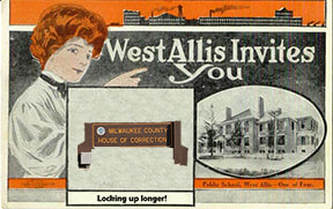 By Gretchen Schuldt West Allis municipal ordinance violators last year spent a total of 21.5 inmate years in the House of Correction because they did not pay their fines. That is more time than the 18.7 inmate years non-paying ordinance violators from all 18 other county municipalities served, according to preliminary House of Correction figures. Because municipal violations are considered civil offenses, rather than criminal, defendants are not entitled to legal counsel. Municipal violations are petty offenses such as disorderly conduct, littering, and traffic violations that are handled through tickets and municipal courts operated by cities and villages. West Allis' 2017 commitment total was up 3.1 years, from the 18.4 years ordinance violators in that city spent locked up in 2016, according to House data. In contrast, Bayside, Hales Corners, Shorewood, Whitefish Bay, and West Milwaukee did not send anyone to the House for non-payment of forfeitures in 2017, according to the figures. A total of 11 municipalities showed a drop in the number of days municipal offenders were locked up. St. Francis showed the biggest decline in days. It sent ordinance violators to the House for a total of 888 days in 2016 and 155 in 2017, a decline of 733 days, or two inmate years. Bayside, Fox Point, Glendale, Greendale, Greenfield, Oak Creek, River Hills, South Milwaukee, Wauwatosa, and Milwaukee also showed declines. Milwaukee's figures might be misleading because some Milwaukee's municipal commitments are served at the County Jail, not at the House, where the vast majority of suburban commitments are served. House commitment days increased in Brown Deer, Cudahy, and Franklin, in addition to West Allis, according to the preliminary figures. West Allis forfeitures for municipal violations are some of the highest in the county. A simple marijuana possession charge, for example, carried a $1,321 price tag. That also was the case in 2015, according to a Public Policy Forum report. Meanwhle, the same offense in Bayside typically carried, typically, a $691 financial hit; in Shorewood, the cost was $376; in Wauwatosa, $100 - $200. State law requires municipalities to reduce the amount of an unpaid Municipal Court fine by at least $50 for each day a violator is jailed, and most (but not all) municipalities hold to the $50 amount. So an unpaid Wauwatosa marijuana citation that would result in a four- to six-day stay in the House would mean in a 26-day stay if the ticket was issued in West Allis. The Robert E. Ellsworth Correctional Center for women has more than twice as many inmates as it was designed to hold. The Prairie du Chien Correctional Institution is operating at 156% of capacity. (When the U.S. Supreme Court told California to reduce its prison population, the Court said the state could not run its prisons at more than 137% of capacity. ) At the very crowded Marshall E. Sherrer Center (175% of capacity) in Milwaukee, the lack of space means inmates don't get needed reentry programming. Sherrer also has inadequate refrigeration for food, according to a Department of Corrections budget request. The Legislature and Gov. Walker rejected the request, instead appointing a committee to study prison needs. This is part 6 in our series on Wisconsin prisons, how crowded they are, and what the Department of Corrections said is needed to improve, repair, and maintain them. Here is Part 1, Part 2, Part 3, Part 4, and Part 5. As always, this primer does not really address the consequences of the crowding and physical shortcomings of the institutions – the impacts on inmates and staff. But we sure hope you will keep them in mind as you consider the price of mass incarceration. Institution: Prairie du Chien Correctional Institution, Prairie du Chien Classification: Medium security Capital budget request: None Institution: Marshall E. Sherrer Correctional Center, Milwaukee Classification: Minimum security Capital budget request: $26,718,000 Status: Rejected From the request: This project would construct a new male correctional center of approximately 53,000 GSF, which will include housing to accommodate 200 inmates, food preparation and dining, visiting, programming, classroom, health services unit, temporary lock-up cell, active and passive recreation, staff offices, basement, and storage. ... The Marshall E. Sherrer Correctional Center was constructed in 1980 to house 30 inmates and now houses 58. Based on the number of inmates who will release to Milwaukee County, a recommendation to increase the number of beds at the center was documented in the 2009 10- year plan. Currently the only program/educational area available is the dining area, which also serves as the center’s visiting room. Due to the lack of existing inmate activity space in the center, inmates are not able to have regular access to reentry programming which is critical to successful reentry. Construction of this facility will provide additional 142-beds to place minimum security inmates with jobs in the community and provide skills to inmates to allow for a more effective transition into the community. Due to the lack of existing inmate activity space in the center, inmates are not able to have regular access to reentry programming which is critical to successful reentry. A number of concerns with the existing facility have been identified and are as follows:
The Center has insufficient storage space for perishable and frozen foods. A walk-in cooler and freezer does not exist. The department could continue with the current “older” facility, but this does not increase capacity nor does it address the fact that programs continue to operate at less than optimum efficiency due to a shortage of space. Another alternative would be to provide additional space outside of Milwaukee County. However, it is important for offenders who previously lived in the community to be given the opportunity to re-establish family relationships and support mechanism within the community to which they will be released. The department could continue with the current “older” facility, but this does not increase capacity nor does it address the fact that programs continue to operate at less than optimum efficiency due to a shortage of space. Institution: Robert E. Ellsworth Correctional Center, Union Grove
Classification: Minimum security Capital budget request: None By Gretchen Schuldt The black / white racial disparity in traffic stops by Milwaukee police was highest in the two police districts with the greatest share of white residents, a Department of Justice study shows. The disparity was greatest in District 6 on the city's far south side. The district is about 70% white, according to the report, yet whites accounted for just 22 percent of traffic stops. African Americans, meanwhile, accounted for 3 percent of the population, but 64 percent of the traffic stops. Hispanics make up 21 percent of the population, and accounted for 14 percent of the traffic stops. In real numbers, blacks were stopped 29,834 times from 2013 to 2015 in District 6; whites were stopped 10,407 times, and Hispanics, 6,335 times. The second greatest disparity was in District 2, also on the south side, where African Americans accounted for 8 percent of the population, but 63 percent of the traffic stops. "The disparity could be a result of the traffic enforcement strategy used by MPD," according to the draft copy of the report, which is all that was released before DOJ ended the study. There are "several" factors that could account for the racial and ethnic variation in traffic stops, the report said. The report now is the subject of a review by a community committee, which will make recommendations to the city for MPD improvement implementation. The table below shows the racial disparity in traffic stops in each police district. It shows the racial makeup of the district, the number of traffic stops by race, the percentage of the total traffic stops for each race, and a racial disparity score.
The disparity score is simply the difference between the population percentage by race and the traffic stop percentage by race. For example, District 5 is 76% black, but African Americans accounted for 67% of all traffic stops, a difference of minus 9 percentage points, which is reflected in the "Disparity" column. The higher the number in that column, the more over represented that particular ethnic group is in traffic stops; the lower, the more under represented. District 5 is the only district in which African Americans fall into the under represented category. Conversely, whites were over represented in traffic stops only in District 2 and 5, and were under represented in the other five. On average, the disparity score for whites was -17; for Hispanics, -4; and for African Americans, +27. By Gretchen Schuldt The state's prison study committee – the one to which Assembly Speaker Robin Vos refused to appoint Democrats – held its first meeting, according to the Kewaunee County Comet. The committee already has approved "a request for proposal (RFP) for a 'committee consultant' to be responsible for conducting an analysis of all correctional institutions and centers and providing the Committee with recommendations to resolve facility needs statewide," the Comet reported. "A key part of the RFP is a requirement for a review of a proposal by Rep. David Steffen, R-Green Bay, to decommission the Green Bay Correctional Institution and builld a new state prison in Northeast Wisconsin, possibly in Kewaunee County," the Comet said. While state officials ponder whether to sell the 100-year-old facility, the Legislature and Gov. Walker, as part of the 2017-19 budget, approved $18.5 million in new spending for cell hall improvements, raising to $22.2 million the total earmarked for the project. Rejected was a $10.8 million request from the Department of Corrections for constructoinof a new health / psychological services unit. This is part 5 in our series on Wisconsin prisons, how crowded they are, and what the Department of Corrections said is needed to improve, repair, and maintain them. Here is Part 1, Part 2, Part 3, and Part 4. As always, this primer does not really address the consequences of the crowding and physical shortcomings of the institutions – the impacts on inmates and staff. But we sure hope you will keep them in mind as you consider the price of mass incarceration. Institution: Green Bay Correctional Institution, Portage Classification: Maximum security Capital budget request 1: $18,482,000 Status: Approved From the request: This project would provide new electrical/lighting, electronics, heating and ventilation systems in both the North and South Cells; and plumbing in the South Cell. The project work would replace the current electrical system with needed circuits and convert to GFCI (ground fault circuit interrupter), and upgrade lighting to energy efficient and security rated light fixtures, as the existing electrical systems were designed to 1950s standards and do not meet current building standards. Most of the electrical troughs that run throughout the cell halls, are heavily rusted. These troughs serve as the electrical system ground and if rusted through, wires will become exposed. The project would replace outlets, electrical panels and troughs to accommodate the 592 cells. The tier lighting, attic lighting and all common area lighting will need to be replaced/upgraded in both cell halls. This project would enhance the security of the cell halls by adding an electronic intercom system. This system would significantly improve communication and safety of inmates by providing a way to contact staff during medical or other emergencies. This project would also install cabling/wiring for TV, door, alarms and controls. South Cell Hall plumbing will be replaced with this project. This will include the replacement of the existing approximate four gallon per flush porcelain toilets and sinks with more efficient stainless steel single unit lavatories. Most of the electrical troughs that run throughout the cell halls, are heavily rusted. These troughs serve as the electrical system ground and if rusted through, wires will become exposed.  The heating/ventilation system uses four outdated heaters in each cell hall and needs to be replaced. If any of the heaters fail, there is no redundancy to provide backup heat. The existing heaters pull in a minimum of 50% outside air in the winter. The exhaust fans on the roof pull out the difference. The steam heat system is well over 60 years old and should be replaced to provide reliability for these critical housing units. ... The supply lines and sewage pipes are very old and develop leaks on a continual basis so this project will include replacement of the drains, waste and vent piping and potable water lines. It will also provide penal style water control systems to reduce/eliminate exposure to raw sewage, and reduce daily maintenance. Capital budget request 2: $10,830,000 Status: Rejected From the request: This project would construct a new Health Services Unit (HSU) / Psychological Services Unit, designed to meet the medical, dental, psychological, and therapeutic needs of our diverse inmate population. Health Services Unit to include: one waiting area, examination rooms, offices for health services professionals, offices for clinical services professionals, a programming group room, medical and clinical records storage, climate controlled secured medication and supply room, dental operatory, a multi-purpose therapy room, a telemedicine system, a radiology room, lab spaces, officer stations and other related spaces. The goal of this project is to provide GBCI with the resources necessary to provide ambulatory health care services for all inmates at GBCI, utilizing a multi-disciplinary approach (physical and mental health wellness) in an environment that is safe for caregivers and inmates. GBCI has a high percentage of inmates with psychotropic needs. The existing HSU was built in the early 1960s. The layout doesn’t meet the guideline of a maximum security health services unit building. ... The existing HSU was built in the early 1960s. The layout doesn’t meet the guideline of a maximum security health services unit building. The HSU does not have a waiting area or a central location for storage of inmate medical records; medication storage is not adequate. The HSU presents security and space concerns. The layout of current HSU doesn’t meet the guideline of a maximum security HSU Building. GBCI is faced with an aging inmate population with increased medical needs. The inmate population at GBCI has a high proportion of psychotropic medications needs inmates. There are a significant number of inmates that require the use of wheelchairs or other assistive devise for mobility. Continued use of the current Health Service Unit will be unable to meet the health care needs of 1,091 inmates given the aging and types of infirmities of the population. ... Insufficient space and inefficient layout of the HSU contribute to a wide variety of concerns relating to safety, effectiveness and efficiency of staff, security of the institution and inmate health care. For example, the dental hygienist must work in a separate room from the dental staff due to existing layout constraints. This means an additional correctional officer must also staff that area. Institution: Oshkosh Correctional Institution, Oshkosh Classification: Medium security Capital budget request: None Institution: Sturtevant Transitional Facility, Sturtevant
Classification: Minimum security Capital budget request: None |
Donate
Help WJI advocate for justice in Wisconsin
|
Copyright © 2024 Wisconsin Justice Initiative Inc.
The Wisconsin Justice Initiative Inc. does not endorse candidates for political office. The Wisconsin Justice Initiative Inc. is a 501(c)3 organization.
The Wisconsin Justice Initiative Inc. does not endorse candidates for political office. The Wisconsin Justice Initiative Inc. is a 501(c)3 organization.

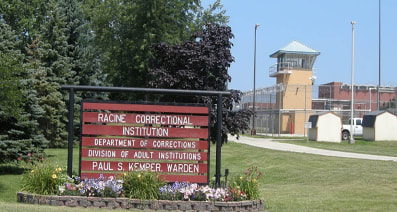







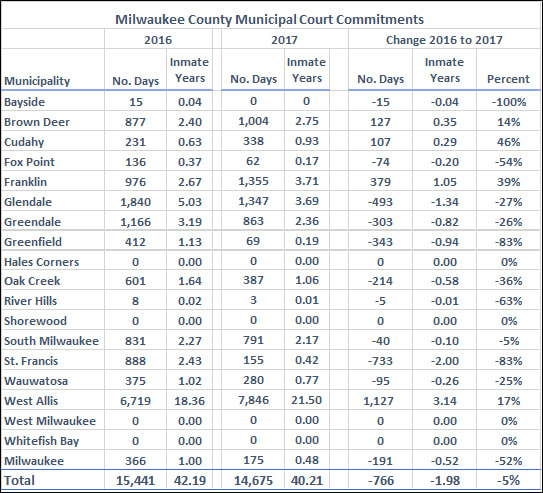







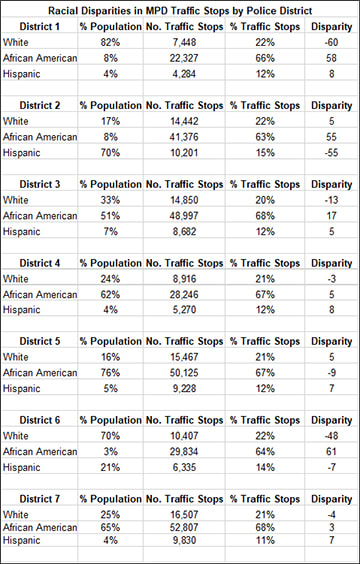



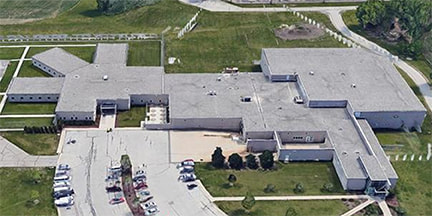

 RSS Feed
RSS Feed